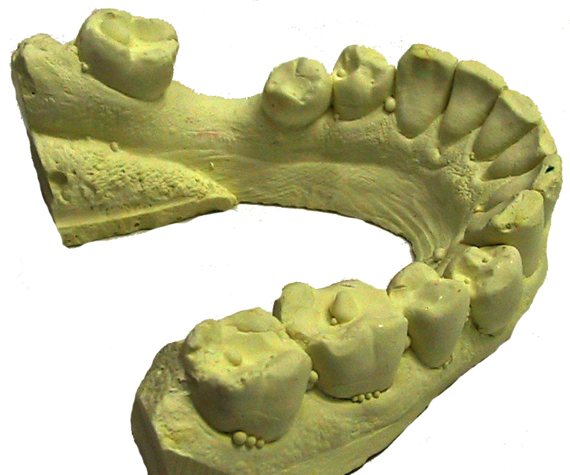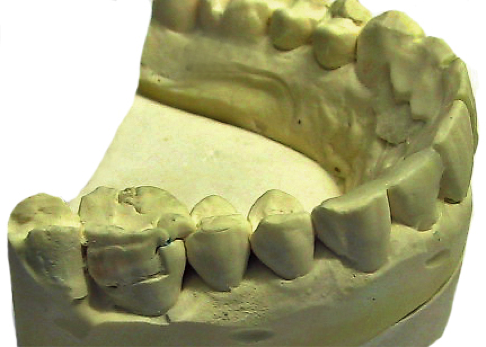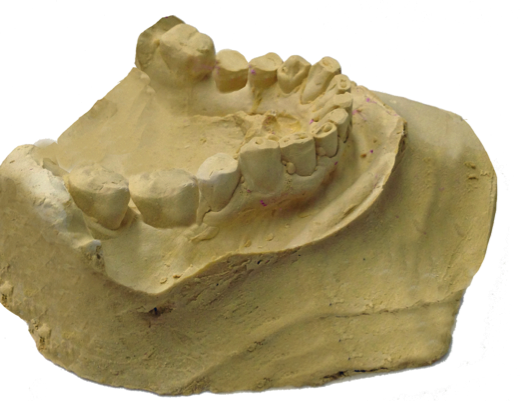opposant models
You’d be amazed at the benefits for your entire dental team when opposing models are made with care. Ultimately, a quality opposing model will affect the time it takes for the final installation of the prosthesis in the mouth. Seemingly minor defects can have a major impact on the final result.
It all starts with the choice of stone. It must be resistant to abrasion. Opposing teeth that wear during the fabrication of the crown could potentially cause an overbite when the crown is placed in the mouth, resulting in lost time. The chosen stone must also have a minimal expansion coefficient, otherwise the articulation with the master model—which is most likely made of high-quality stone—could be slightly off, thus requiring additional adjustments in the mouth.
The dental laboratory usually receives pre-cast opposing models because the chosen impression material is alginate. Obviously, there cannot be any negative bubbles on the teeth of the impression, and the photo below illustrates other points to keep an eye out for.

- There are too many large positive bubbles. Eliminating the excess stone can make the teeth in the model somewhat inconsistent with reality.
- The model was cast with an inexpensive and porous stone that wears easily.
- This horseshoe shape makes the model too fragile. It could break in the transport box. We need a base that connects everything together.
The following photo illustrates a defect that, if not detected, will cause major overbite problems. We can see a “stratification” on tooth 26, no doubt because of movement as the alginate was hardening.

Lastly, not all dentist offices have dental laboratory equipment, which is understandable, but with nimble hands and a simple spatula, we can work magic and save time. And time… is precious

Remember
We can serve you anytime all summer long. The laboratory is open during normal office hours.





